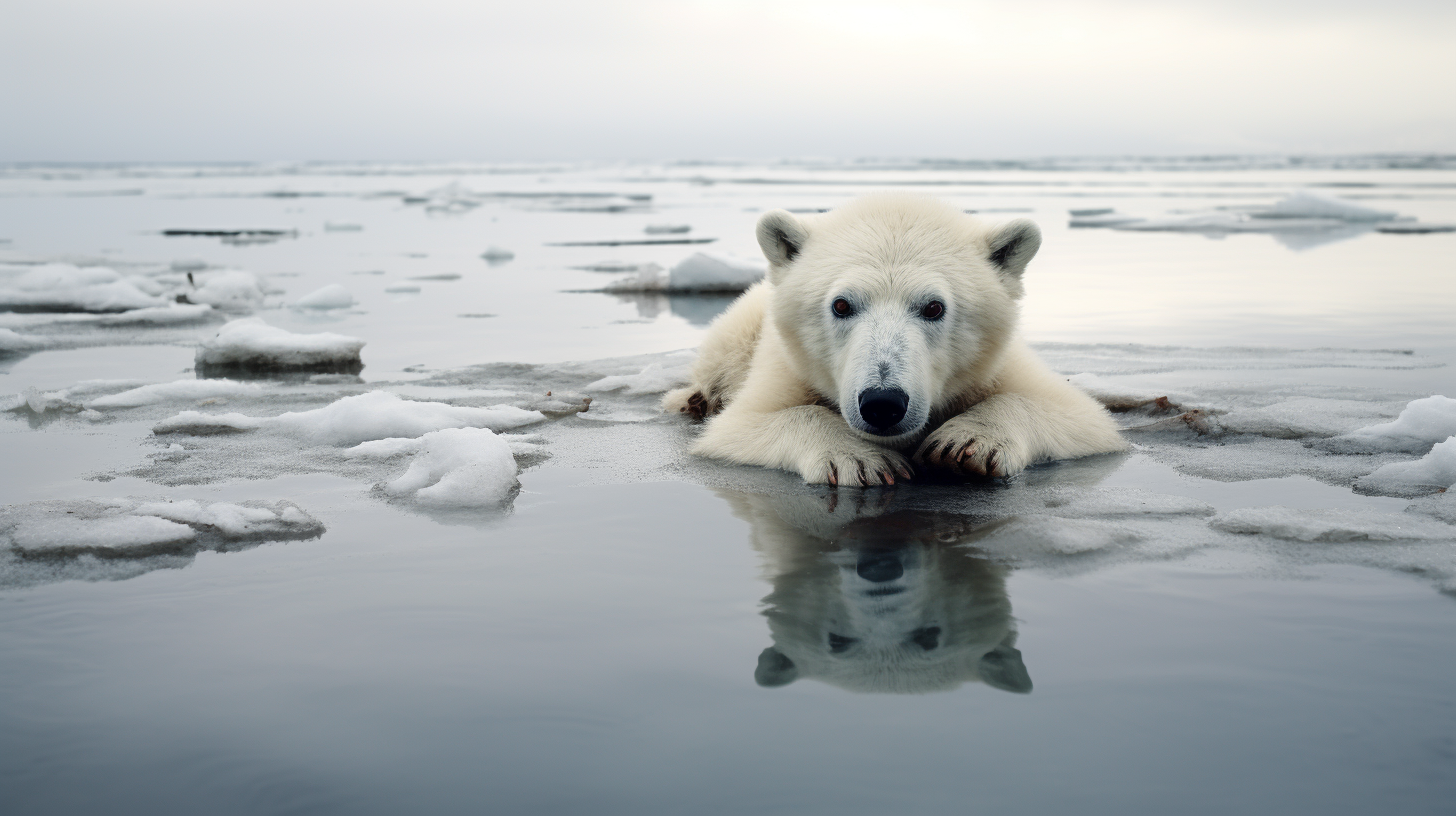Amidst the heart-wrenching orchestra of glaciers cracking, a lone polar bear stands monument to a vanishing world. This is the Arctic, or rather, what little is left of it. Rising temperatures have transformed this once pristine white expanse into an open water graveyard, where ice vanishes beneath their paws. In this chapter of relentless decay, polar bears cling to the recession lines of their crumbling throne.
These Heirs of the Arctic roam across sheets of thinning ice in desperate search for food, an image too macabre to be part of a natural documentary. Our narrative takes an even darker turn as we witness mothers leading their cubs into an icy maze with no exit, no solace, and tragically, no future. The image is sobering – a mother’s instinct to nurture is compromised by the unyielding clutch of an environment in freefall.
But what can one expect when the air is thick with the carbon exhalation of our civilization? As we probe into the grim details of this dystopian Arctic, we see not just isolated suffering but hints of a broader ecological upheaval. Seal populations are shrinking as their icy birthing rooms dwindle, leaving their young vulnerable. Walruses, those huddled masses, are found clambering over one another on scraps of land, as if in a grotesque rendition of musical chairs where the music has long stopped but the desperation lingers.
The implications reach far beyond these desolate northern reaches. As ice retreats, the dark waters absorb more heat, accelerating a cycle that once began at a glacial pace. Where icebergs once struck awe in the hearts of explorers, now only the ominous silence of rising seas echo the sound of a ticking clock.
Scientists issue their forecasts with a stoicism that borders on disillusionment, they know the figures spell a grim tale – yet their warnings are juxtaposed against a backdrop of inconceivable inaction. The disintegration of these fragile ecosystems is not a page turn in the annals of natural history; it is the erasure of chapters that we are yet to comprehend fully.
We delve further into this twilight zone, where the surreal becomes the norm. Aurora borealis still casts its spell over the icy desert, a celestial display indifferent to the world’s metamorphosis beneath. And within this isolated beauty, the plight of the polar bear becomes a symbol – not of resilience or some uplifting tale of adaptation, but as a grim mascot of what the future holds in this ecological purgatory.
The narrative takes a reflective pause, pondering the fate of these heirs, whilst human beneficiaries of the Earth’s resources continue to gamble with the very future they rely upon. Our reflections pierce through this darkened looking glass, asking, ‘What worth are our accomplishments if they stand upon the wreckage of nature’s masterpieces?’ Sad to admit, the grandeur of human achievement feels acutely hollow here.
Despite the dystopian present of the Arctic, some tales of tenacity flicker in this cold darkness. There are those who resist, who fight not to turn the page on this dire narrative but to author a new one altogether. Yet, these efforts seem infinitesimal against the backdrop of a world that has seemingly surrendered to its climate chaos.
In the end, we leave our readers pondering the legacy we leave for the true heirs of the Arctic – not as custodians of their kingdom, but as curators of their collapse. It is this bitter pill that we must all swallow, for the reflection is not in the ice, but in our collective mirror. As the curtains fall on the desolate stage of the Arctic, the echoes of our actions will continue to reverberate, long after the last ice melts beneath the paws of its rightful rulers.
